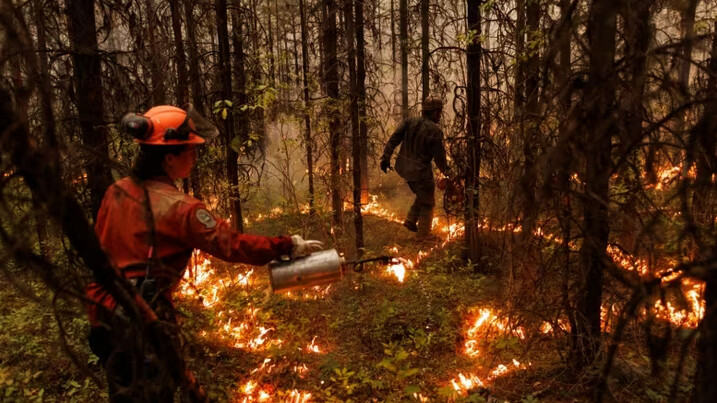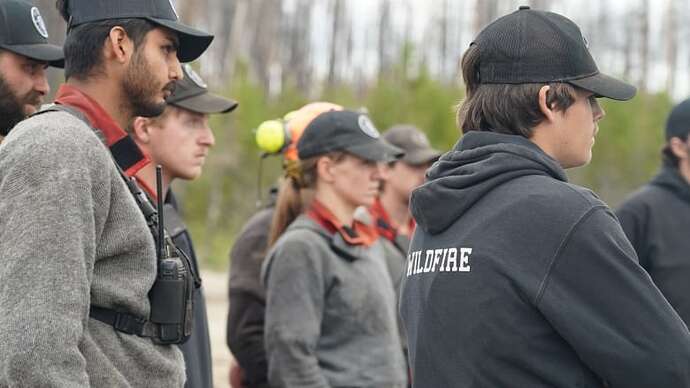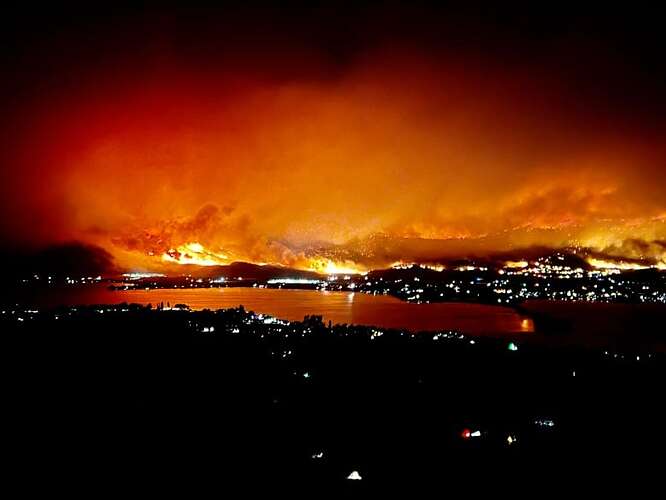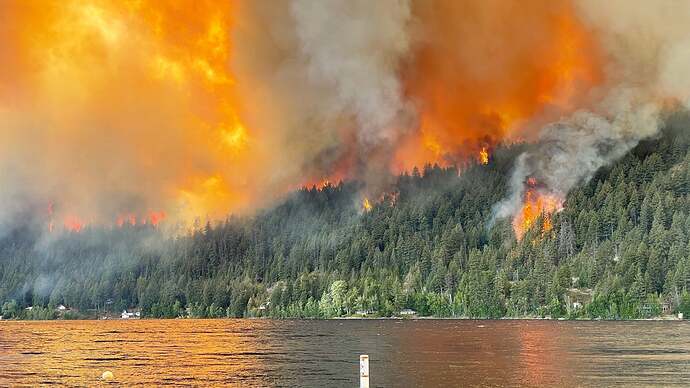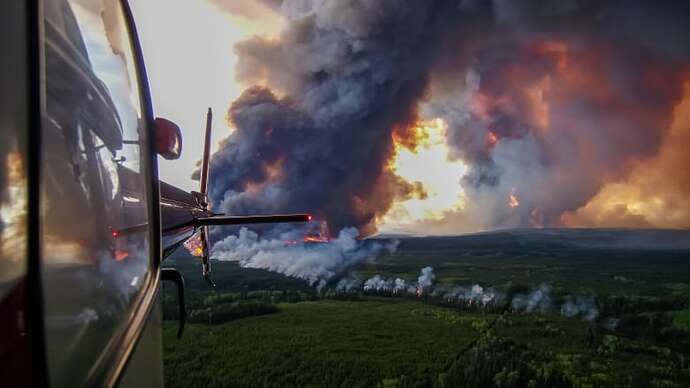Canada should consider a national firefighting force that could deploy quickly anywhere provinces or territories request help, according to two scientists in B.C.
The idea was floated this week by a wildfire expert at Thompson Rivers University in Kamloops, B.C., in the Interior — about 171 kilometres northwest of Kelowna — who argued it currently takes too long to get help from out-of-province or other countries.
“The military has been called in a number of times,” said science professor Mike Flannigan, who is the B.C. Innovation Research Chair in Predictive Services, Emergency Management and Fire Science.
“I don’t think this is sustainable for us to use the Canadian military every year. If we had trained national force, we could use them preemptively instead of reactively like we tend to do now.”
But the federal government said that idea is not on the table, at least not yet, and that firefighting falls under provincial and territorial powers — while Ottawa is focusing on funding, training, equipment and research.
“There’s no specific discussion about a dedicated national force,” said Michael Norton, director with Natural Resources Canada’s Canadian Forest Centre, at a technical briefing to reporters Friday in North Vancouver.
B.C. Wildfire Service crews receive a helicopter briefing before flying out to a site in the Vanderhoof-Fort St. James fire complex. Wildfire expert Mike Flannigan says it currently takes too long to get firefighting help from other provinces or countries. (Tom Popyk/CBC News)
"Our system of firefighting is based primarily on provincial and territorial responsibility for public lands.
“I don’t want to convey that anything is off the table … Any idea might might surface as being viable and desirable by the various jurisdictions.”
He said there will be a review with provinces and territories of lessons learned from this year’s fire season once it ends.
However, although Flannigan agreed firefighting would normally be a provincial area of authority, “we’re in uncharted territory,” he said.
That’s because this year’s record-breaking wildfire season has seen roughly 134,000 square kilometres burned, six times worse than the 10-year average in any one year.
That is nearly double the previous record of 76,000 square kilometres that burned in 1989.
“Currently we spend $1 billion [annually] … 2023 is going to exceed $1 billion, I’ll tell you that right now,” Flannigan said.
“And this is only going to increase with time as we see more and more fires.”
Harjit Sajjan, Canada’s minister of emergency preparedness, said the country already has “sufficient resources to manage the wildfires.”
-
Military, international resources help fight B.C. wildfires as more evacuation orders, alerts issued
-
Military begins deployment, highway to Bella Coola closed as hundreds of wildfires burn across B.C.
“I understand how important it is to have the capacity necessary to fight increasingly frequent, unpredictable, and intense wildfires,” Sajjan said in a statement to CBC News on Friday, adding the Canadian Armed Forces remain ready to deploy when requested by provinces.
Prevention and mitigation
Another fire expert questioned whether a fire response squadron would address the real problem of wildfires — preventing the worst dangers by removing fuels to burn near communities.
Wildland fire ecologist and consultant Robert Gray told CBC News he would rather see that approach, and praised Ottawa’s emphasis on Indigenous and community-level fire prevention efforts.
The Eagle Bluff wildfire is seen burning from Anarchist Mountain, outside of Osoyoos, B.C., in this July 29, 2023 handout photo. Canada’s record-breaking wildfire season has seen roughly 134,000 square kilometres burned, six times worse than the 10-year average in any one year. (Michelle Genberg/The Canadian Press)
“Should we focus on response?” Gray, in Kimberley, B.C. — about 168 kilometres west of the border with Alberta — told CBC News on Friday.
"Everyone is telling us we have to pivot to mitigation and prevention.
“More people, yes — but more people to do that front-end work dealing with fuels, preparing communities and infrastructure, so that they can survive and be resistant to fire.”
‘Frequency and intensity’ of wildfires is higher: Wilkinson
3 days ago
Duration 0:50
Energy and Natural Resources Minister Jonathan Wilkinson announced more funding for wildfire prevention and said the natural phenomenon is happening more because of climate change.
He said unlike the U.S., which has tens of thousands of personnel already scattered across the country, having Ottawa take on such a role “would be a little bit tougher.”
The Canadian Interagency Forest Fire Centre (CIFFC) currently helps provinces co-ordinate wildfire response, training and mutual aid.
A spokesperson said the centre “hopes that all options are on the table following this wildfire season,” but could not comment on specific proposals.
Looking to Australia
The idea of a new national firefighting force has gained support from another scientist, biologist Richard Cannings.
The Member of Parliament for South Okanagan—West Kootenay told CBC News he wants Ottawa to closely consider Flannigan’s proposal.
It would bring Canada in line with similar fire-impacted countries, such as Australia. Cannings said such an initiative could reduce financial and staffing stress on regional wildfire services, and increase the efficiency by which provinces can respond quickly to new fires.
Air crews are pictured supporting efforts to fight the Donnie Creek wildfire. Biologist Richard Cannings told CBC News he wants Ottawa to consider the idea of a national firefighting force. (B.C. Wildfire Service)
“This is what we’re going to be living [with] for the next decades and centuries to come,” he told CBC News. "So let’s get prepared for it.
“It would be better to train up a national force and get them into the right place at the right time … a civilian force that we could use across the country.”
